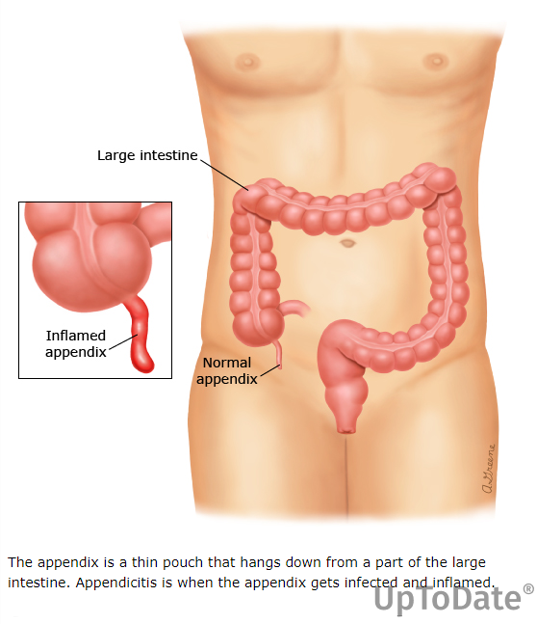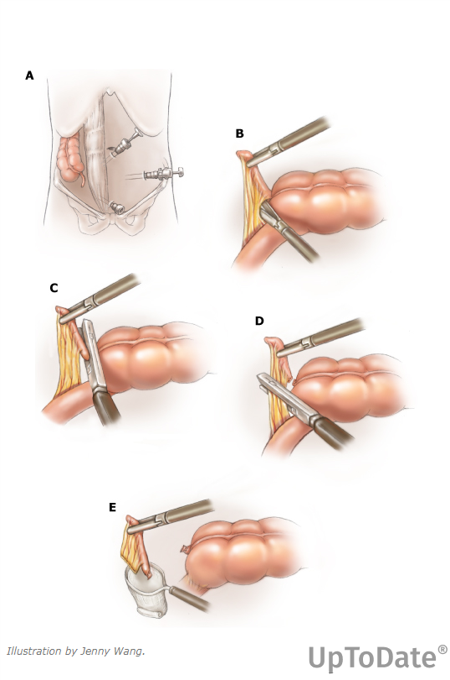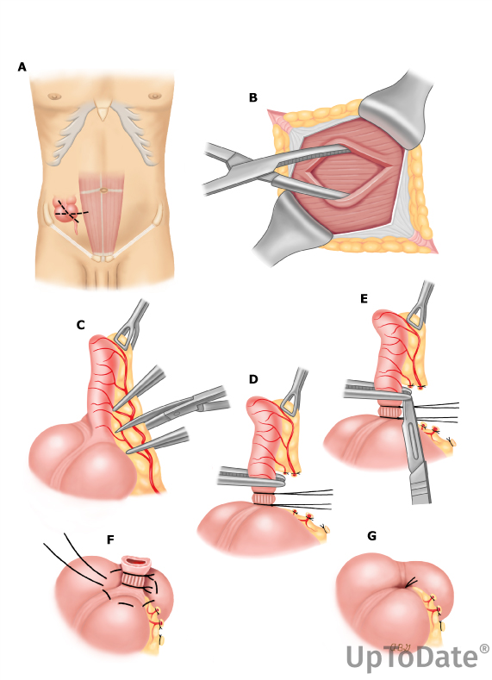Appendectomy: What You Need to Know
*Disclaimer
The information provided on this webpage and it’s external links, is intended for general informational and independent research purposes only. It is not a substitute for professional medical advice, diagnosis, or treatment. Always seek the direct guidance of your physician or other qualified healthcare provider with any questions you may have regarding a medical condition. Do not disregard or delay seeking professional medical advice based on information obtained from this site.
What is an Appendectomy?
An appendectomy is a surgical procedure to remove the appendix, a small, finger-shaped organ attached to the large intestine. Though the appendix doesn’t have a clearly defined function, its inflammation—called appendicitis—can cause severe pain and may become life-threatening if left untreated. Removing the appendix is the standard treatment for appendicitis and is considered a common and safe procedure.

This page provides an overview of why an appendectomy may be necessary, what to expect before and after the surgery, and helpful resources for recovery.
Why an Appendectomy Is Needed
An appendectomy is usually performed in response to appendicitis, an urgent medical condition where the appendix becomes swollen, infected, and filled with pus.
Common signs of appendicitis include:
- Sudden pain in the lower right abdomen
- Loss of appetite
- Nausea or vomiting
- Fever
- Abdominal bloating or tenderness
- Pain that worsens with movement, coughing, or deep breathing
If left untreated, a swollen appendix can burst (rupture), spreading infection into the abdomen (peritonitis), which can be life-threatening.
Types of Appendectomy
There are two main surgical methods for removing the appendix:
1. Laparoscopic Appendectomy
- Minimally invasive
- Performed through a few small incisions
- Uses a camera and specialized instruments
- Faster recovery and less scarring

2. Open Appendectomy
- Involves one larger incision in the lower right abdomen
- May be necessary if the appendix has ruptured or if infection has spread
Your surgeon will determine the best approach based on your condition and overall health.

Before the Procedure
If appendicitis is suspected:
- You’ll be evaluated with blood tests, urine tests, and imaging (such as ultrasound or CT scan).
- Once diagnosed, surgery is typically scheduled immediately, often as an emergency procedure.
- You may receive IV fluids and antibiotics before surgery.
During the Procedure
- The procedure typically takes 30 to 60 minutes.
- You’ll receive general anesthesia, so you’ll be asleep and feel no pain.
- The surgeon removes the appendix and closes the incision(s) with sutures or staples.
- If the appendix has ruptured, the area may be cleaned and a temporary drain placed to remove infection.
After the Procedure
Recovery Timeline:
- Hospital stay:
- 1–2 days for uncomplicated appendectomy
- Longer if the appendix ruptured
- At home recovery:
- Most patients resume light activity within a few days
- Full recovery typically takes 2–4 weeks
What to Expect:
- Mild pain or soreness at the incision site
- Temporary fatigue or changes in appetite
- Antibiotics or pain medication as prescribed
- Instructions on wound care, bathing, and activity restrictions
Call your provider if you notice:
- Fever over 100.4°F (38°C)
- Redness, swelling, or drainage from the incision
- Persistent nausea or vomiting
- Severe abdominal pain or swelling
Potential Risks and Complications
Appendectomy is generally safe, but complications may include:
- Infection (internal or at the incision site)
- Bleeding
- Damage to nearby organs
- Reactions to anesthesia
- Bowel blockage or abscess (rare)
Your surgeon will discuss these risks with you before surgery.
Frequently Asked Questions (FAQs)
Can I live without an appendix?
Yes—removing the appendix has no long-term health effects.
How soon can I return to school or work?
Light activity is usually okay after 1 week. Full return depends on your healing and job demands.
What about diet after surgery?
Start with light meals and gradually return to your normal diet unless advised otherwise by your provider.
Will I have a scar?
Laparoscopic procedures leave small scars; open surgery leaves a larger one, usually along the lower right abdomen.
Will I be able to drive myself home after my procedure?
You’ll need someone to drive you home after the procedure, as sedation can impair your judgment and reflexes.
Can I eat or drink before surgery?
No. You’ll need to avoid food and drink for several hours beforehand. Please refer to the documentation your doctor provided to you for at your appointment or Pre-Op.
Can I shower after surgery?
Usually after 24–48 hours, but follow your surgeon’s instructions.
Is driving safe after an appendectomy?
Wait at least 1–2 weeks and only drive when you’re off pain meds and can move comfortably.
What if my incision is red or itchy?
Mild redness or itching is normal. If it’s hot, swollen, or draining pus, call your provider.
What if a stitch comes out early?
Call your provider. Some stitches dissolve on their own, but early removal may need checking.
When can I resume sexual activity?
Typically after 2–3 weeks, but only when you’re comfortable and cleared by your provider.
What if I forgot a dose of my meds?
Take it as soon as you remember, unless it’s almost time for the next dose (within 6 hours of your next dose).
Can I fly or travel soon after surgery?
You may travel after 1–2 weeks if you’re feeling well. Avoid long trips early on.
Can appendicitis be treated without surgery?
In some cases, antibiotics alone may be used, but surgery is the most effective treatment.
Helpful Resources
- Appendicitis – Mayo Clinic
- American College of Surgeons: Patient Education
- National Institutes of Health – MedlinePlus: Appendectomy
Questions or Concerns?
Your care team is here to help. If you’ve been diagnosed with appendicitis or are recovering from an appendectomy, don’t hesitate to contact us with questions about your treatment or recovery.
